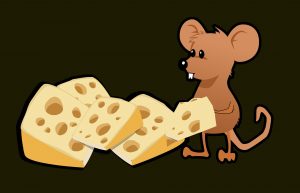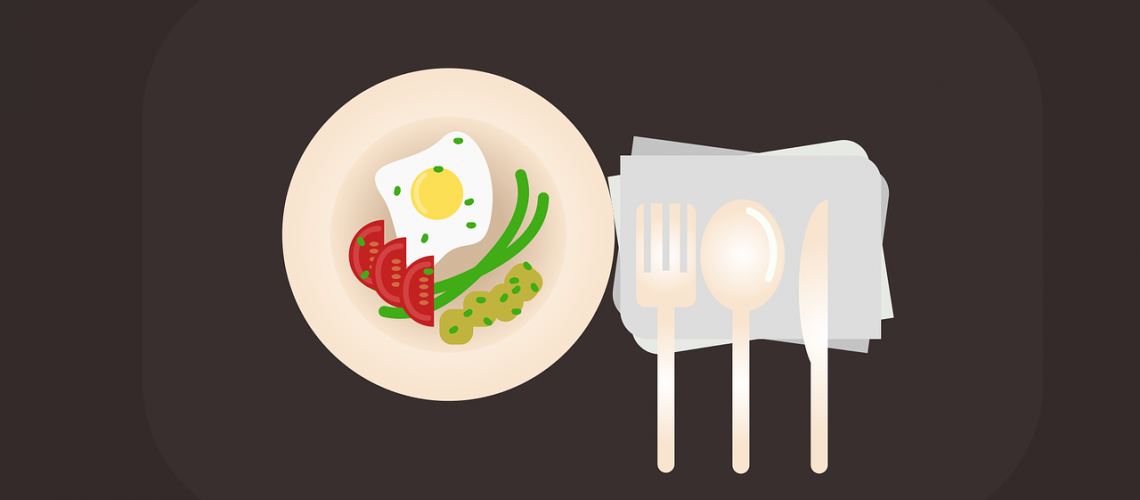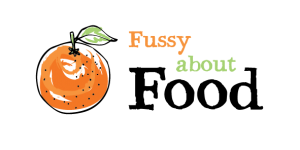Food neophobia from the perspective of a toddler
Food neophobia in toddlers can in part be explained by human evolution. How? Most animals are born instinctively knowing what to eat. Take a lion, for example. Even if it were to be kept in captivity with no contact with other lions, it would never become a vegetarian. Humans are a bit different and this explains why most toddlers experience food neophobia at some point. Mostly, humans have to learn what is good to eat. We do this through experience, through learning from others and through cultural norms.
The omnivore’s dilemma
Humans are classed as omnivores. Through the centuries we have been able to survive and flourish by adapting to the food sources available. For example, if winter was very cold and there were fewer edible plants available, we could have survived by hunting more. If a summer drought withered one type of fruit, we could choose from many others. This omnivorous ability also means humans were able to survive and thrive in many different parts of the world by adapting to the local food sources.
But this ability to survive on a wide range of food sources has also left us with a bit of a quandry. How do we know and learn what is edible? This problem has been called “the omnivore’s dilemma”.1
The dilemma is this: we have to have a certain willingness to try new food sources. This allows us to survive when one food source dries up. But this has to be balanced with a degree of caution. How can we know if a potential food source is toxic?
Why does food neophobia exist?
The word neophilia comes from Greek – it means love of the new. Neophobia, also from Greek, means fear of the new.
Because our ancestors were willing to try new foods (food neophilia), while also being suspicious of unfamiliar foods (food neophobia), we were more likely to get enough food and nutrition, while avoiding potentially poisonous or toxic plants, animals, and animal products.2
Researchers think that this dilemma plays a role in explaining why young children can be suspicious of new foods until they have learnt that they are safe to eat.3 This is particularly the case for toddlers who are just starting to walk and so access a wide range of solid foods.4
Food neophobia and the nibble test
Many studies into food aversion have been conducted using rats. This is partly because rats can’t vomit, as they lack the required muscles.
Rats also lack any instinct about what to eat and what to avoid, in the same way as humans do. Because they are able to survive on a wide range of different foods, they have to learn what is good to eat and what makes them ill.
Rats do this by taking a small bite of a new kind of food and waiting to see what happens. If the food makes them feel good, they will come back another time and have more of that food. If it makes them ill, they will avoid that food in the future. (This is why poisoning rats is so hard, a phenomenon known as “bait shyness” – rats soon learn to avoid a poisoned food that makes them ill.)

Plenty of other animal species also take a small bite and wait to see what happens, including many monkeys and even warblers! 5
Food neophobia protects against poisoning
You may have noticed that children often take a tiny nibble of a new food item and wait to see what happens. In fact, many adults do this too.
Humans – adult and children – also study the people around them for clues: “Are they eating it? Do they seem to enjoy it, which means it must be good? Or are they making a disgusted face, which tells me it must be bad?”
We do not know this for sure yet, but some theorise that a small proportion of humans are naturally more sensitive to bitter tastes, and other tastes that might be poisonous, as a way to protect the rest of the group. If this theory is true, then a taste-sensitive person may have had a bite of a new type of food on behalf of a group to see if it tasted OK – and to check whether it might be poisonous.
Of course, it wouldn’t be good for everybody to be this sensitive, because then we would never try and eat new foods, which might have resulted in us starving.
Food neophobia and walking toddlers
Today, most things a toddler will try to consume will be good to eat – or, at least, not toxic. Many centuries ago, this was quite different. A toddler would have been far more likely to get his hands on things that were poisonous. We think that this explains normal food neophobia in toddlers – that the fear or suspicion of new foods is a clever protective mechanism.6 It prevents young children, who are exploring the world (and who may, even if just for split seconds, be out of their guardians’ sight) from ingesting substances that are potentially harmful.
This suspicion of the new may even extend to familiar and previously enjoyed foods, especially if they are presented in new ways, with unknown foods, or under unfamiliar circumstances.
Food neophobia and cross-contamination
One behaviour that often puzzles parents is when their toddler doesn’t like foods touching, whether on the plate or even in a sandwich.
It’s easy to understand why a child might not like food touching if we look at it from an evolutionary perspective. Research has shown that we will reject food that we know, or think, has been contaminated by something we think of as disgusting.
This is often the case even if the bit we are eating cannot possibly be contaminated. For example, if you saw a cockroach run over one half of your plate and then run off, you wouldn’t want to eat the food on the other side of the plate, even if you knew that the food on that side of the plate couldn’t possibly be contaminated.
Toddlers and cross-contamination of food
While children younger than 3-5 are not able to think of contamination in such an abstract sense as an adult, considering how we learn what is safe to eat and what is not in these terms might help you to understand some odd toddler food behaviours.
A new food, or a food that she is still unsure about, is a little bit like the side of the plate the cockroach has not been on. Research conducted by Steven Brown and colleagues at the University of Aberdeen has confirmed what parents of toddlers already know: when a portion of new food is presented alongside a disliked food, and the two foods touch, the disliked food “contaminates” the food that they already like.7 The children, who were all aged between 4 and 6, were also less likely to try the food that they already liked when it had been in contact with a disliked food.
Keep it separate
So, if your little one doesn’t like his food touching, don’t serve new foods touching others on the plate – it is quite likely that he will then reject food that was previously considered to be OK.

Until your little one becomes familiar with and learns to like the new food, all the food on the plate might be contaminated; she might find it just as disgusting as food that has been walked over by a cockroach. Young children are just learning what is food and what is not food. They are also learning what to avoid so that they don’t become ill.8
Picky eaters and how food looks
Research has shown that children respond differently to different aspects of a food’s texture and look than adults do.
For example, children seem to prefer a variety of colours, foods that are not mixed together and food with a consistent texture (no lumpy bits!).9 Researchers have also found that sensitivity to texture and food pickiness often go hand-in-hand in 1-to-4-year-olds.10 This is unsurprising when we consider that a young child’s instinct is to avoid anything that might be contaminated.
For a young child still learning what is good to eat and what to avoid, things like texture and familiarity matter. Until he is sure of the new food, he is likely to be suspicious of it. Research has shown that young children are universally suspicious of, and will often reject, foods that are covered in sauces, mixed together, brown or multi-coloure.11
Ask your toddler
To understand your toddler’s perspective on food, you could try asking him why the new food is scary or describe the aspects of the food that you think might be worrying him: “That tomato does have a funny texture, doesn’t it? The seeds feel a bit slimy in your mouth. Is that what is worrying you?” You might be surprised at the response you get. Even if it changes nothing right now in relation to this meal, it will give you a fascinating insight into your child’s fears and worries.
Whatever the reason, his concerns, however trivial and nonsensical they may seem to us, certainly aren’t to him. Young children are just learning the wonderful world of food, a vast world of possibilities, but also of fears.

- Rozin, P., Fallon, A.E., 1987. A Perspective on Disgust. Psychological Review 94(1), 23-41.
- See for example: Dovey, T.M., Staples, P.A., Gibson, E.L., Halford, J.C., 2008. Food neophobia and ‘picky/fussy’ eating in children: a review. Appetite 50(2-3), 181-93; Flight, I., Leppard, P., Cox, D.N., 2003. Food neophobia and associations with cultural diversity and socio-economic status amongst rural and urban Australian adolescents. Appetite 41(1), 51-9; Martins, Y., Pliner, P., 2005. Human food choices: an examination of the factors underlying acceptance/rejection of novel and familiar animal and nonanimal foods. Appetite 45(3), 214-24; Milton, K., 1993. Diet and primate evolution. Scientific American 269, 70–77; Russell, C.G., Worsley, A., 2008. A population-based study of preschoolers’ food neophobia and its associations with food preferences. Journal of Nutrition Education and Behavior 40(1), 11-9.
- See Addessi, E., Galloway, A.T., Visalberghi, E., Birch, L.L., 2005. Specific social influences on the acceptance of novel foods in 2-5-year-old children. Appetite 45(3), 264-71; Birch, L.L., Gunder, L., Grimm-Thomas, K., Laing, D.G., 1998. Infants’ consumption of a new food enhances acceptance of similar foods. Appetite 30(3), 283-95; Rozin, P., Vollmecke, T.A., 1986. Food likes and dislikes. Annual Review of Nutrition 6, 433-56.
- Cooke, L., Wardle, J., Gibson, E.L., 2003. Relationship between parental report of food neophobia and everyday food consumption in 2-6-year-old children. Appetite 41(2), 205-6.
- Addessi, E., Visalberghi, E., 2006. How social influences affect food neophobia in captive chimpanzees: a comparative approach. In: Matsuzawa, T., Tomonaga, M., Tanaka, M., eds. Cognitive Development in Chimpanzees. Tokyo: Springer-Verlag, 246-264.
- Lafraire, J., Rioux, C., Giboreau, A., Picard, D., 2016. Food rejections in children: Cognitive and social/environmental factors involved in food neophobia and picky/fussy eating behavior. Appetite 96, 347-357.
- Brown, S.D., Harris, G., Bell, L., Lines, L.M., 2012. Disliked food acting as a contaminant in a sample of young children. Appetite 58(3), 991-6.
- Mura Paroche, M., Caton, S.J., Vereijken, C.M.J.L., Weenen, H., Houston-Price, C., 2017. How Infants and Young Children Learn About Food: A Systematic Review. Frontiers in Psychology 25(8), 1046.
- van der Horst, K., Deming, D.M., Lesniauskas, R., Carr, B.T., Reidy, K.C., 2016. Picky eating: Associations with child eating characteristics and food intake. Appetite 103, 286-293.
- Ibid.
- Ibid.



